Text
LEARNING ARCHITECTURE: FOCUSING ON THE IMPORTANCE OF THE RELATIONSHIP BETWEEN THE ARCHITECT-THEORIST AND THE ARCHITECT-CREATOR
4-5 December 2020
Professor dr Vladan Đokić held a keynote lecture at 8th International Conference “On Architecture” organized by @strandassociation at Serbian Academy of Sciences and Arts, Gallery of Science and Technology in Belgrade, Serbia.
The lecture showcased specific endeavours, tools, and methods for straightening the relationship between theory and practice in education within 1) academic context (the University of Belgrade - Faculty of Architecture (UB – FA)) and 2) professional context (European Council of Spatial Planners (ECTP) Young planners Workshop). The presentation was focused on the experience in the previous three years highlighting how small but constant changes in the teaching process can create a better relationship with the architect-creator and the architect-theorist.
Vladan Djokić is the Dean at the University of Belgrade, Faculty of Architecture. Since 2017, he is the president of the Serbian Network of Urban Morphology (SNUM), and a member of the Executive Committee of the European Council of Spatial Planners (ECTP).

Abstract:
The importance of the relationship between creators and theorists in the field of architecture and urbanism is highly relevant for understanding the discipline itself. In recent years, creative making in the field of architecture has gained a new dimension, facilitating architectural achievements to subsequently establish an affiliation with certain theories. That is, this retroactive theoretical premise, which allegedly has driven an architectural achievement, should establish the stronghold and approach of the architect-creator.
On the contrary, there is another approach, according to which the architect-creator and the architect-theorist work in parallel and are mutually complementing and harmonizing. In such situations, theory and architectural achievement have joined strength and a harmonious and sincere relationship.
The topic of this paper is to show the approach focused on the importance of the relationship between the architect-theorist and the architect-creator. The approach is explained by two learning processes that take place independently of each other in two different institutions, one academic and the other professional. In both cases, the focus is on establishing a link between research/theoretical and design/practical, and in the domain of perspectives and experiences within the context of new European paradigms.

0 notes
Text
ECTP-CEU Young planners workshop
A Young Planners’ Workshop is a yearly event organized by the European Council of Spatial Planners (Conseil Européen des Urbanistes: ECTP-CEU) as a part of a professional and academic endeavor to provide a framework for continuous research activities for young planners. This timespan implies two workshops, a final presentation, and an eBook, with several feedback sessions provided by ECTP representatives. The 2020 workshop theme was Heritage in a planning context and was organized and led by the editorial team, which consisted of Vladan Djokić and Loukas Triantis.
Due to the pandemic circumstances, this year’s workshop was held entirely in an online environment.
The final presentation was held in the form of a Webinar, preceded by introductory speeches by Michael Stein, ECTP-CEU President, and Vladan Djokić, Young Planners Workshop Chair. The Webinar took place on Friday, November 27, 2020.
Here, we present an abstract by the authors - SNUM members (Aleksandra Djordjevic, Mladen Pešić and Aleksandra Milovanović) while the full eBook can be downloaded on the following link:
http://www.ectp-ceu.eu/images/stories/YP-2020/Young%20planners%202020%20ISBN_EAN.pdf
TITLE: Heritage and urban design competitions: Global challenges and local experiences from Serbia
ABSTRACT:
This research aims to open up a discussion about urban design competitions as a tool for collecting in-depth considerations and solutions for sites relevant to the local government unit. Research starts from the hypothesis that competitions are used as a part of an institutional and professional effort to maintain and provide sustainable use of heritage. The challenges that are set ahead planners are how to assure unique and site-specific solutions and still protect tangible and intangible heritage yet answer to the demands of sustainable urban development and reduce negative effects of globalization and neoliberal pressures perceivable in heritage degradation through marginalization, inadequate use, gradual decline due to unresolved ownership statuses and even overshadowing by and multiplication of identical patterns and forms.
The paper will briefly review the Serbian planning context in relation to urban design competitions and consider its impact on urban development practice. The focus of the paper will be on researching the practice of initiation, evaluation, presentation, and implementation of several urban design competitions carried out for small and medium sized cities. Analysis of the above-stated stages of urban design competition could provide comprehensive insights into understanding the way how heritage is treated in different stages of planning and urban development process by different actors and institutions. This paper will argue for the value of urban competitions for a wider understanding of urban heritage, faced with various social and political pressures by recognizing specific values, their interpretation and providing a new lifespan for the inherited elements.
keywords: urban design competitions, heritage urbanism, small and medium-sized cities, Serbia.
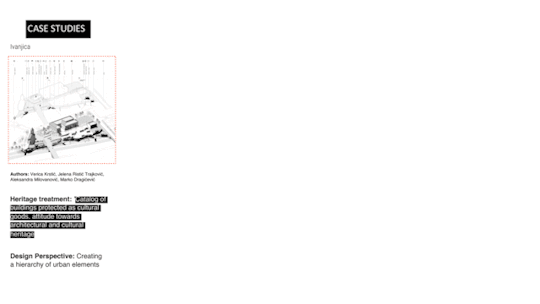
0 notes
Text
Conference presentation - online
27th ISUF International Seminar on Urban Form - Cities in the 21st Century. 1-4. September Salt Lake City, Utah, USA.
Plot by plot urbanism project: Conclusions and the Challenges Ahead Mapping post-socialist changes in urban tissues. Case of Krakow and Belgrade. A Comparative Study. ISUF Small Scale Projects: Research & Practice, 2017 - 2019
A.A. Kantarek, V. Djokic, K. Kwiatkowski, A. Niković, W. Korbel, A. Djordjevic, I. Samuels
Abstract
This paper presents the final findings of the project on the post-socialist urban form undertaken over the last two years with the support of ISUF, University of Belgrade - Faculty of Architecture, and Cracow University of Technology. Historical evolution, a general review of the planning contexts, analysis of urban tissues, and field visits to Krakow and Belgrade, conducted in the first year, have shaped the selection of cases and the general study that has been undertaken for five case studies from both cities. The cases vary from peripheral areas to major city streets and modernistic settings specific for both cities. The final phase implied a review of three pairs from both cities, preparation of the GIS database, and comparison on several grounds: land use pattern, year by year establishment of new plots, FAR and BAR. Plot by plot development is mainly observed through the analysis of interdependences between construction year and plot size, number of buildings on the plot, and the increase of urban parameters and built and unbuilt ratio. The project highlights parallels of conditions to which similar urban tissues in different countries have been exposed in the post-socialist period and reveals the variety of problems and challenges of urban regulation, land ownership and housing investments in relation to post-socialist urban form.
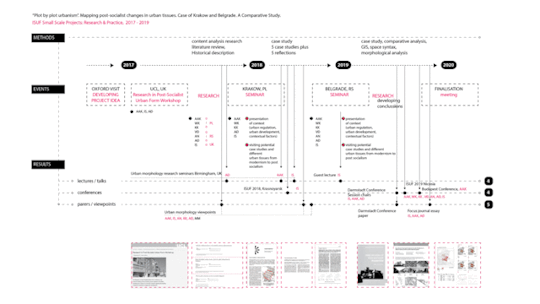
#isuf2020
0 notes
Text
Article
U+D urban form and design. Vol 11/12. pp. 24–34
„Belgrade“ Department stores: setbacks, cahllenges and new perspectives on an old commercial Model [I grandi magazzini „Belgrado“: decadenza, sfide e nuove prospettive di un vecchio modello commerciale
Vladan Đokić, Ana Zorić, Aleksandra Đorđević
University of Belgrade – Faculty of Architecture

https://issuu.com/urbanform/docs/monografico_u_d_n._11-12_2019_issue/24
0 notes
Text
Conference presentation
5th ISUFitaly International Conference I URBAN SUBSTRATA AND CITY REGENERATION I Morphological Legacies as a Design Tool
Urban morphology education in Serbia: Origin, genesis and new tendencies
Vladan Djokić, Milica Milojević, Aleksandra Djordjević, Mladen Pešić
University of Belgrade – Faculty of Architecture, Department of Urbanism
Abstract
...Having in mind recent contribution of researchers to emphasize the challenges of teaching urban morphology, this paper aims to enlighten the origin and genesis of the education of urban morphology at the Faculty of Architecture, University of Belgrade and to shed the light on new tendencies and means of teaching in present days. The paper will analyze syllabus of the courses, teaching methodology and present examples of student’s projects on three different levels and courses: ex cathedra on the bachelor level, practical implementation of theoretical notions in studio design on master level and research-based work on the PhD level.

Course books Urban Morphology, 2004; City and city square, Urban Typology: City square in Serbia, 2009
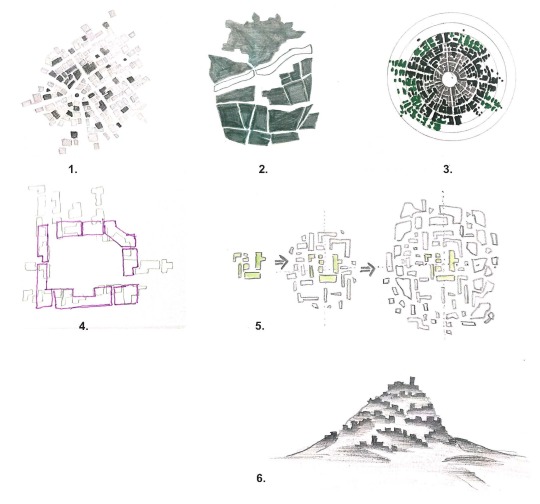
Illustrated Glossary (croquis drawings)
1. Urban structure, student: Tijana Žišić; 2. Urban structure, student: Teodora Simonović; 3. Monocentric morphogenic processes, student: Una Korica; 4. Morphogenesis - Moderate transformation, student: Ninoslav Markovic; 5. Monocentric morphogenic processes, student: Jovana Stefanović; 6. Privileged position of the city, student: Daliborka Dabić

Selected work from Master course, student: Tamara Koneska
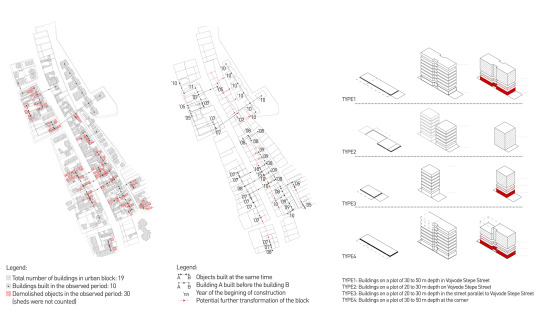
Selected work from PhD course, student: Aleksandra Đorđević
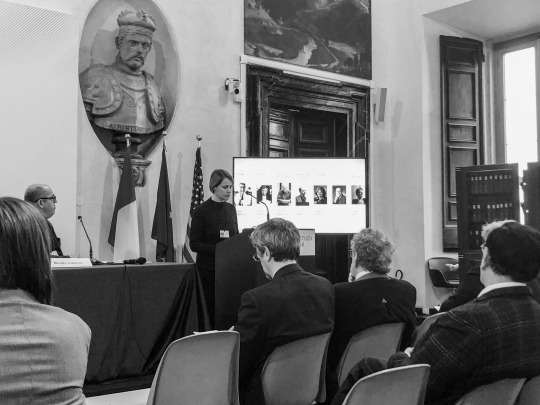
Presentation by Milica Milojevic. Rome, February 2020
0 notes
Text
Book reviews
SAJ 2019 _11_
TEACHING URBAN MORPHOLOGY. EditeD by Vitor Oliveira. The Urban Book Series, Springer Nature Switzerland, Switzerland, 2018, 338pp.
by Aleksandra Đorđević
and
URBAN MORPHOLOGY: AN INTRODUCTION TO THE STUDY OF THE PHYSICAL FORM OF CITIES. EditeD by Vitor Oliveira. The Urban Book Series, Springer Nature Switzerland, Switzerland, 2016, 192pp.
by Jovana Bugarski
University of Belgrade – Faculty of Architecture
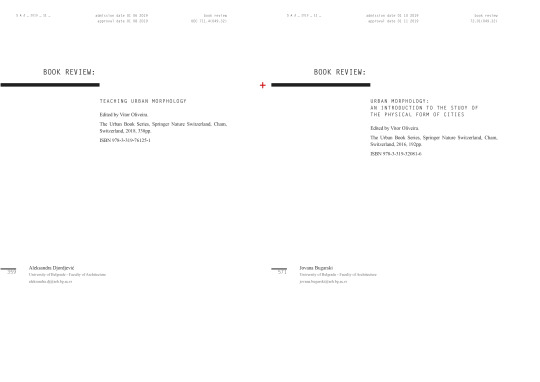
0 notes
Link
We were honored host the lecture by Ivor Samuels at the Faculty of Architecture, University of Belgrade, on Tuesday, May 09, 2017 at 11.15 am at the Faculty Amphitheater.
Lecture “Typomorphology and Urban Design Practice - A View from the UK and France” was held for the students of the first year of bachelor academic studies of Architecture, within the scope of the corse Morphology of the City ( prof. Vladan Djokic, PhD)
0 notes
Text
Young planners Workshop
ECTP-CEU Young Planners Workshop 2019 Planning on the edge
Cultural Landscape of Former Yugoslavia and Mediteranian Cities – Planning on Edges and Crossroads
Aleksandra Đorđević, Mladen Pešić, Milica Milojević
University of Belgrade – Faculty of Architecture, Department of Urbanism
Abstract
...This research aims to open up a discussion about Mediterranean cities in the former Yugoslavia’s republics: Bosnia and Hercegovina, Croatia and Montenegro. Although located in different states, it is possible to trace historical underpins and cultural landscape that have shaped those cities for years – the tradition of a fortified city, the urban matrix, city structure, street proportions and local materials.... This paper will argue for the value of understanding cross border understanding of cities, faced with various social and political contexts by recognizing their effects and benefits on urban development.

0 notes
Text
The Serbian Urban morphology network (SNUM) was established in 2016, consist of researchers and practitioners from fields of architecture, urban planning, transport engineering and conservation. SNUM president is professor Vladan Djokić from the Faculty of Architecture, University of Belgrade. Specific interest areas deal with the evolution of Serbian town’s urban form, research and practice relations and teaching urban form.
0 notes